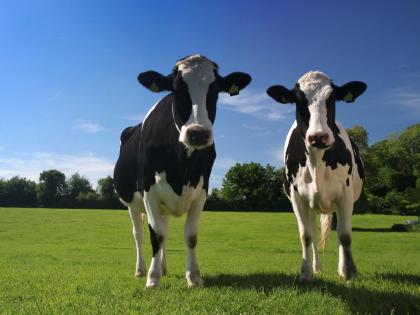Did you know that you can have lactose intolerance and still enjoy the taste and nutritional benefits of dairy foods?
According to an expert panel convened by the United States National Institutes of Health (NIH) to examine lactose intolerance and health, eliminating dairy foods may not only be unnecessary to manage lactose intolerance, but also may lead to nutrient shortcomings which may result in adverse health effects.
Many health professionals, as well as the recent dietary guidelines in the USA and Australia, encourage individuals with lactose intolerance to choose dairy foods first as a key source of essential nutrients, including those of most concern: calcium, potassium and vitamin D.
Lactose is the sugar naturally found in milk and many milk products. In order to digest lactose, the body needs lactase, an enzyme that is made by the body. Lactose intolerance occurs when a person does not make enough lactase to break down lactose, which may cause them to experience physical symptoms when consuming foods that contain lactose.
It is important to consult your GP if you think you, or a member of your family, are lactose intolerant. Often, a doctor will order a breath hydrogen test, which is considered the ‘gold standard’ for diagnosis. Self-diagnosis is not recommended as it can lead to an unnecessary restriction of dairy foods, an inadequate intake of dairy's nutrients, and a missed opportunity to detect other manageable disorders characterised by similar symptoms, such as irritable bowel syndrome, coeliac disease, milk protein allergy.
Because tolerance for lactose varies from person-to-person, lactose intolerance is a highly individualised condition, and the management of it is also individual.
Here are some practical tips that may be recommended:
- Sip It
Start with a small amount of milk daily and increase slowly over several days or weeks to tolerance.
- Stir It
Mix milk with other foods, such as smoothies, soups or sauces, or pair it with meals. This helps give your body more time to digest it.
- Slice It
Top sandwiches or crackers with natural cheeses such as Cheddar, Colby, Monterey Jack, Mozzarella and Swiss. These cheeses are low in lactose.
- Shred It
Shred your favourite natural cheese onto soups, pastas and salads. It's an easy way to incorporate a serving of dairy that is low in lactose.
- Spoon It
Enjoy easy-to-digest yoghurt. The live and active cultures in yoghurt help to digest lactose.
- Try It
Drink lactose-free milk. It is real cow's milk with the same nine essential nutrients, just without the lactose. Also, try using it in recipes as a substitute for milk where required.



















__small.png)










